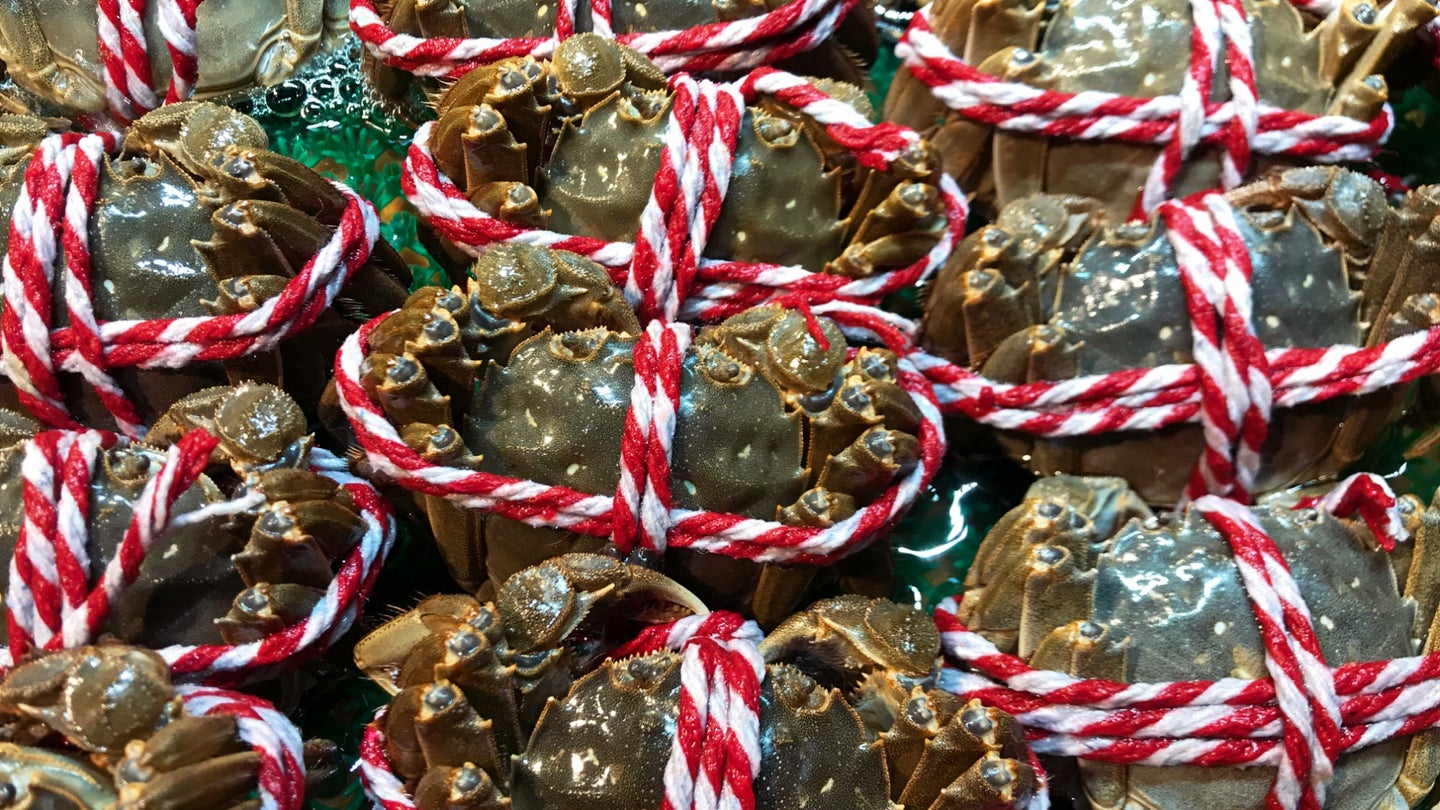
This article was originally featured on Hakai Magazine, an online publication about science and society in coastal ecosystems. Read more stories like this at hakaimagazine.com.
Chinese mitten crabs are a delicacy among some seafood lovers: deeply savory, with a distinctive tinge of sweetness. Diners crack the shells open and eat the meat piping hot, dipped in rice vinegar and soy sauce with sliced ginger. The unique flavor of the crabs, most of which are grown in farms on China’s Yangtze River, is crucial to their popularity. When it comes to seafood, research shows that consumers prioritize taste above all else—including health benefits and environmental sustainability.
“All other things sort of fall by the wayside,” says Grant Murray, a marine policy researcher at Duke University in North Carolina who studies consumer seafood choices. “If it doesn’t look good and smell good and taste good, nobody’s going to buy it.”
Now, new research by biochemists at China’s Soochow University and Kunshan Yangcheng Lake Crab Industrial Research Institute suggests that when coveted mitten crabs are fed black soldier fly larvae, they can be made even tastier.
The researchers swapped out the regular diet of farmed mitten crabs—mostly ground-up fish caught as by-catch—for the lab-grown black soldier fly larvae, which have become a promising alternative aquaculture feed for species from Atlantic salmon to tilapia, carp, and catfish. The larvae are high in protein and fat, and they’re quick, easy, and safe to produce, says Murray, who was not involved in the study.
After feeding 12 captive crabs black soldier fly larvae for two months, the scientists measured the meat for important taste-enhancing amino acids including glutamic acid, which can intensify a food’s umami or savory taste, and glycine and arginine, which determine sweetness and bitterness. These molecules, which are present in the larvae, are deposited in the crustaceans’ tissues as they grow. After eating the larvae, the crabs’ muscles contained higher levels of sweet amino acids and lower levels of bitter amino acids. Male crabs also had more amino acids associated with umami flavor in their gonads, which diners eat with the rest of the crab.
Not everyone is convinced that the shift in amino acids will amount to a tastier crustacean though. It’s plausible, says Charles Spence, a sensory researcher at the University of Oxford in England who was not involved in the study. But taste relies on many factors beyond chemistry, including scent, temperature, texture, cooking method, and what the food is paired with, says Spence. Since a taste test was not part of the study, “who knows what things are going to taste like?” And simply adding flavor enhancers, such as umami-elevating MSG, doesn’t always produce the desired effect, he says, otherwise chefs would be adding salt, sugar, or MSG to every single dish.
In the long run, producing a tastier mitten crab by feeding it a more environmentally friendly feed could be a win-win—driving consumers to eat more sustainably, even when it’s not their primary priority. Yet even if mitten crabs were 10 or 20 percent more delicious, says Murray, that doesn’t mean they’re going to become more popular.
Still, as part of the greater push to green our diets, this may be one way to eat more insects without actually having to eat them yourself.
This article first appeared in Hakai Magazine and is republished here with permission.
The post The sustainable secret to raising tastier crabs appeared first on Popular Science.
Articles may contain affiliate links which enable us to share in the revenue of any purchases made.
from | Popular Science https://ift.tt/EyA8XeY










0 Comments